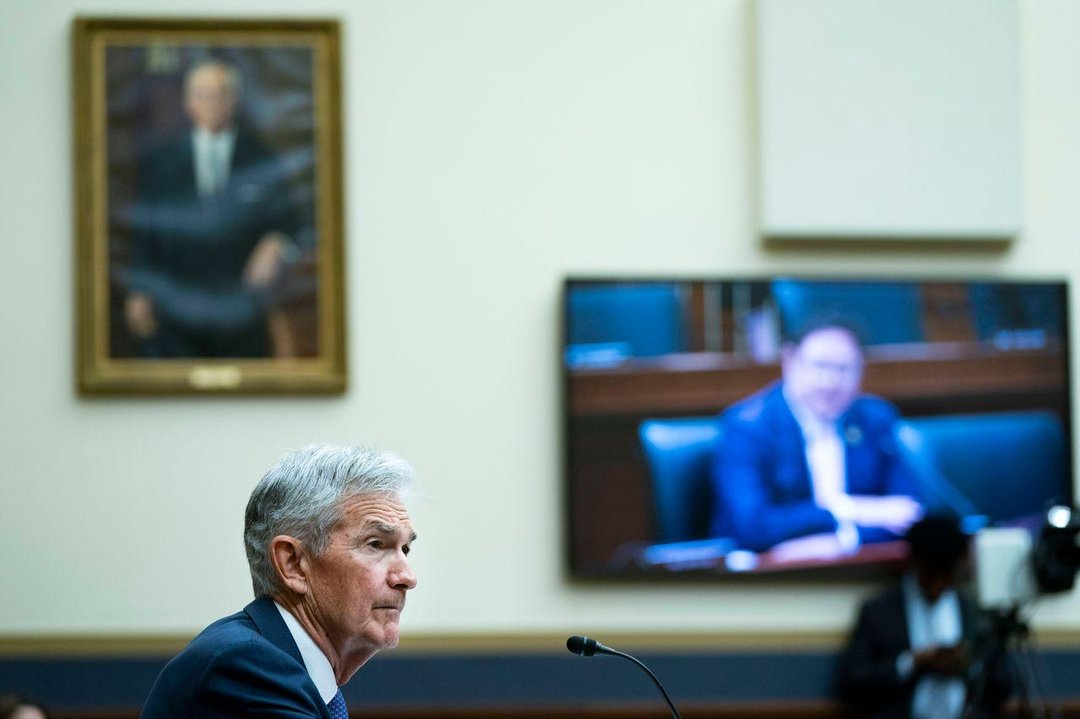
By Nick Timiraos
July 11, 2024
It didn’t move markets, but during two days of congressional testimony this week, Federal Reserve Chair Jerome Powell made the beginning of a pivot on interest rates that might prove more durable than one that sparked a big market rally at the end of last year.

Federal Reserve Chair Jerome Powell spoke Wednesday on Capitol Hill. PHOTO: BONNIE CASH/GETTY IMAGES
Around December, Powell and several colleagues signaled they could begin the process of dialing interest rates down as soon as the middle of the year if inflation, which cooled notably in the second half of last year, continued on that path. When Powell testified on Capitol Hill in March, he allowed that the Fed was “not far” from achieving the confidence it needed to cut rates.
That case for reducing rates, it turned out, had been built on a rickety foundation. When inflation turned up in the first quarter and the economy showed solid growth, the justification for lower rates crumbled.
But when Powell returned to Capitol Hill this week, he began laying the groundwork for rate cuts on what could prove to be a stronger footing. He pointed to how a cooling labor market means a potential source of ongoing, high inflation has diminished. And he suggested that any further softening in the job market might be unnecessary and unwelcome.
Striking the balance between ensuring inflation comes back to the Fed’s 2% goal while preventing a sharp rise in layoffs “is the No. 1 thing that just does keep me awake at night,” Powell said on Wednesday. “Trying to make decisions that give that the best chance to happen—that is the thing that I think about in the wee hours.”
On Tuesday, Powell said that the labor market was “not a source of broad inflationary pressures for the economy,” a revealing observation given the extent to which Fed officials feared over the last two years that overheating labor markets might sustain high inflation.
Instead, Powell said that high inflation had been caused by the collision between very strong demand and supply chains that were already messed up by the pandemic. Inflation fell last year even though the economy grew solidly because labor- and product-market bottlenecks eased. “I think we know more now about where this [inflation] came from because we can see what made it go away,” he said Wednesday.
Inflation fell to 2.6% in May, according to the Fed’s preferred gauge, down from 4% a year earlier but still above the Fed’s 2% target. The Labor Department is set to report Thursday on inflation for June as measured by a different yardstick, the consumer-price index.
Powell’s testimony this week probably didn’t make a big splash with investors because he didn’t suggest a rate cut was possible at the Fed’s meeting later this month and because market participants had already begun to expect the central bank could start cutting rates at their subsequent meeting in September.
Still, for veteran observers of the central bank, the latest comments were notable because they indicate the bar for reducing rates may be lower than it was just a few months ago.
“The tide has turned,” said former Fed governor Laurence Meyer in a note to clients on Wednesday. Powell was careful to avoid pre-committing to coming moves by dropping calendar-based hints, having been burned by disappointing inflation readings earlier this year. But his comments suggest he thinks “inflation is back on track” while the labor market “is on the edge of an unwanted slowdown,” Meyer said.
The Fed raised rates at the fastest pace in 40 years in 2022 and 2023 to combat inflation. Officials have held their benchmark rate between 5.25% and 5.5%, their highest level in more than two decades, since last July.
Officials are trying to balance the risk of moving too slowly to reduce rates with the risk of moving too soon. Lowering rates too soon could allow inflation to settle out above the Fed’s target. While layoffs are low, they tend to rise rapidly as the economy weakens, which argues against keeping rates too high.
The unemployment rate has climbed this year to 4.1% in June from 3.7% at the end of last year, largely because hiring has slowed and it is taking new workers or those re-entering the workforce longer to find work. That’s less concerning, for now, because layoffs are still low.
It’s possible that immigration, which has boosted the supply of workers over the last two years, declines in the months to come, leading the unemployment rate to go back down.
Fed officials including Powell, however, have signaled that they’re on higher alert for signs that the unemployment rate continues to climb for worrisome reasons. “The job is not done on inflation. We have more work to do there,” Powell said. “But at the same time, we need to be mindful of where the labor market is, and we have seen considerable softening in the labor market.”
Write to Nick Timiraos at Nick.Timiraos@wsj.com
Dow Jones & Company, Inc.



